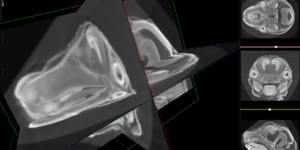
Ada Byron, Lady Lovelace: World’s first programmer drew inspiration from Jacquard loom
The British Computer Society will present the 2002 Lovelace Medal to Carl Kesselman, professor of computer science at the USC School of Engineering and director of the USC Information Sciences Institute’s Center for Grid Technologies, in London in May.
Kesselman will receive the medal along with Ian Foster of the University of Chicago and Argonne National Laboratory’s Mathematics and Computer Science Division for their joint work with the Globus Project and grid computing. The Globus Project is a research and software development project led by Kesselman and Foster. The project delivers grid computing research advances and open source software for science, engineering, business, and other collaborative situations. Grid computing is the high-speed networking equivalent to the electric power grid, providing computer power on demand, much the way a power grid provides electricity.
R&D magazine recently named the Globus Toolkit developed by the Globus Project the “Most Promising New Technology” developed this year.
Kesselman and Foster also co-edited The Grid: Blueprint for a New Computing Infrastructure, published in 1999. The book helped lay the groundwork for the field of grid computing, building the community and framing subsequent discussion and research.
The Sept. 16 Internet edition of Newsweek called Kesselman and Foster “two of the founding fathers of the grid,”
Kesselman’s Center for Grid Technologies at ISI employs or collaborates with more than 40 ISI and USC researchers and students. Center projects include a Grid-linked Network for Earthquake Engineering Simulation (NEESGrid); the Grid Physics Network (GriPhyN), and the international Virtual Data Grid Laboratory (iVDGL), all funded by the National Science Foundation, and the Earth System Grid and Particle Physics Data Grid projects, funded by the U.S. Department of Energy.
The Center is also a co-principal investigator in the NSF-funded National Middleware Initiative, which is building on Globus work to expand the scope of open-source Grid applications.
The Lovelace Medal is presented to individuals who have made contributions of major significance in the advancement of information systems. Previous recipients of the medal include Doug Engelbart, developer of the computer mouse and computer windows; and Linus Torvalds, developer of the Linux operating system. Established in 1997, the medal is named after Ada Byron, Lady Lovelace, daughter of the poet Lord Byron, who collaborated with Charles Babbage on the development of mechanical computers during the first half of the 19th century. She suggested to Babbage a plan for a mechanical computer that now is regarded as the first computer program.
Published on October 18th, 2002
Last updated on August 10th, 2021













